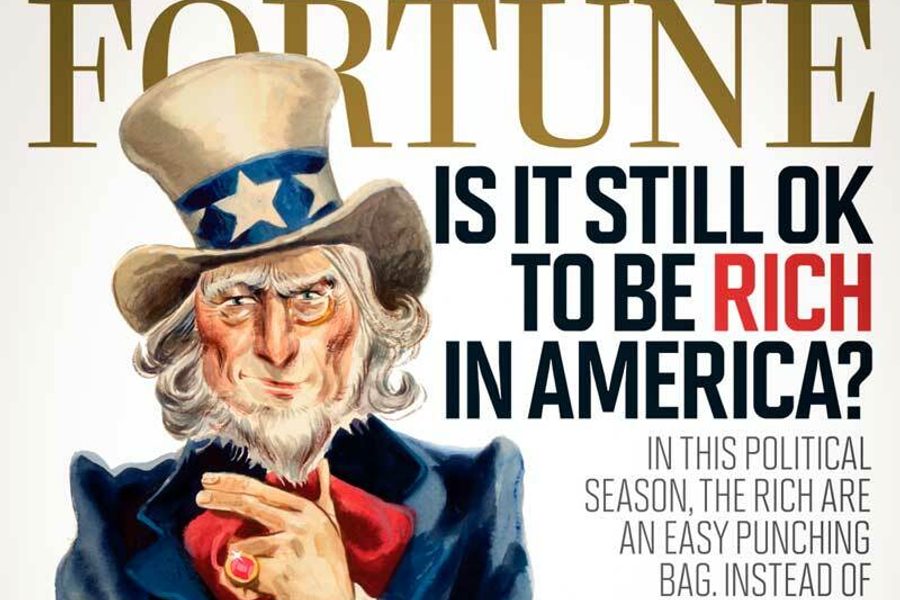Rich Deserts
Our new cult of money ensures that breeding shall evermore speak to breeding.
Chris Lehmann

On the first anniversary of the Occupy Wall Street protests, Americans got a pointed reminder of the country’s steady drift into plutocratic rule: Mother Jones magazine released the now-infamous video of GOP nominee Mitt Romney speaking at a Florida fundraiser. In his remarks — inconveniently delivered at the Boca Raton estate of hedge-fund manager Marc Leder, renowned for hosting raucous summer sex parties in the Hamptons— Romney dismissed half the country as professional “victims” so disfigured by their dependence on government that “I’ll never convince them that they should take personal responsibility and care for their lives.”
Of course it’s just not true that 47 percent of the nation’s population are indolent moochers who vote for Democrats as a unified bloc the same way that baby robins sing in unison at feeding time. But never mind. Romney is dealing not in policy prescriptions, but in social mythology narrowcasted to flatter his audience at the $50,000-a-plate event — to garland the fanciful notion that the biggest winners in today’s capitalist marketplace are also the possessors of the greatest swaths of plain human virtue.
But the real scandal is not what Mitt Romney professes to believe, but that this counterempirical canard is now the standard mantra of our commentariat. Consider one entirely representative specimen that appeared around the same time that Romney’s oligarchical bantering became public: Nina Easton, the Washington senior editor for Fortune, composed the September cover story “Is It Still OK to Be Rich in America?” Easton excitedly notes that the United States is not, strictly speaking, a hereditary aristocracy. “Most of the 1.4 million taxpayers who make up the top 1% gained their wealth through their own efforts rather than by inheritance,” she burbled, even though precisely no one within OWS was suggesting that the 1% was a class of coddled scions. And Easton duly intones the pet shibboleths of the overclass’s pet virtue-mongers: Wealth ultimately flows from the mystical provinces of education and culture — two realms that government can’t effectively control and that, by sheer coincidence, are taken to be the spontaneously won endowments of the model new rich in today’s America. “During the post-World War II decades, a period of extraordinary income equality that economists label the Great Compression, Americans had a relatively common and unifying set of incentives and values,” Easton primly marvels. She omits to mention that at the height of postwar prosperity, Americans enjoyed historic rates of union membership and enacted upper-bracket marginal tax rates of 90 percent.
And while American educational attainment has lagged — in large part due to the regressive funding of our schools via property taxes and the concomitant affluent white flight from urban public school systems — Easton again avers that the global market’s verdict on the lower orders’ life chances is not to be contravened: “There’s a limit to what policy makers can do about the ravages on a middle-aged man’s job prospects after three decades worth of technological advances and global competition,” she notes, briefly letting her gaze linger on history’s dustbin. Small wonder, then, that the only path forward for this class is to emulate their social betters. “Top American lawyers, bankers, consultants, and entrepreneurs,” she writes, “are playing on a wide turf and tap- ping into fast-growing emerging markets. Rather than engaging in diatribes against them, we should be asking how to build access lanes into that global economy for other Americans.”
Of course, Easton enjoys a prime HOV access lane of her own in the new global economic order: She is married to GOP political consultant Russell J. Schriefer, the former Romney 2008 strategist who operates a D.C. messaging boutique with Stuart Stevens, the lead political strategist of the 2012 Romney campaign.
There may not be a formal aristocracy of inherited wealth in this country, but as the quotidian corruption fueling D.C. careers like Easton’s makes plain, our new cult of money ensures that breeding shall evermore continue to speak to breeding.









